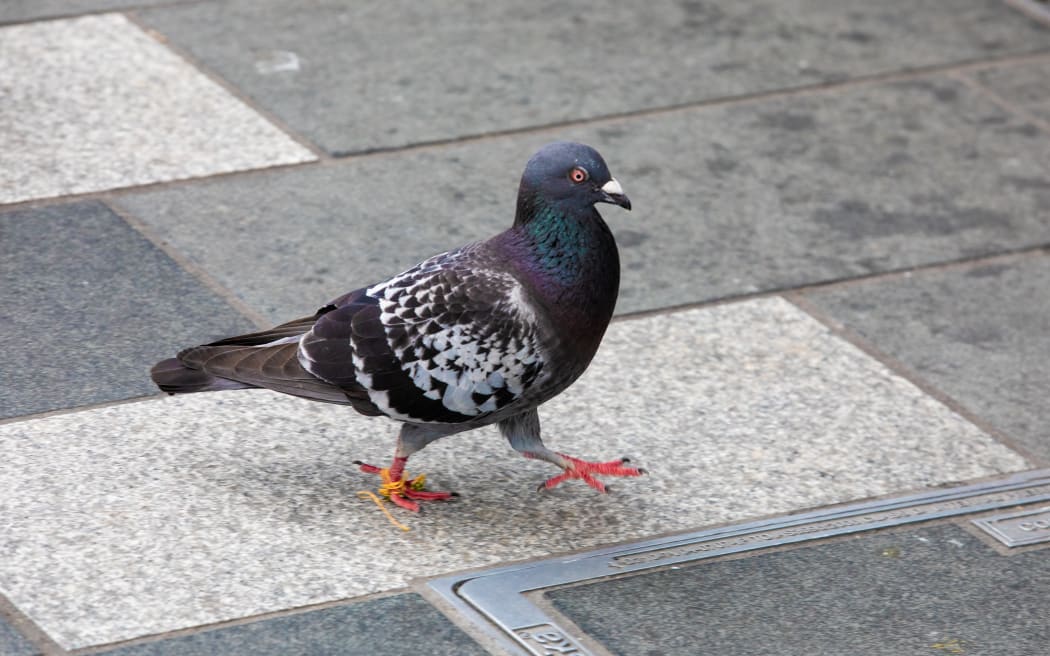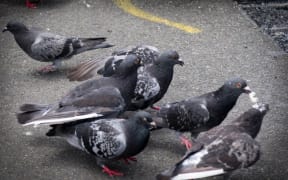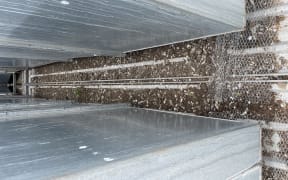
File image. Photo: RNZ / Marika Khabazi
A pigeon purge in Ashburton's CBD is not on the council's agenda because the population has already been reduced from a previous collaborative approach.
Ashburton Event Centre general manager Roger Farr aired frustration at the financial burden of cleaning up after the pigeons and believed others in the CBD will feel the same with an opportunity for a combined effort to better control pigeons.
Ashburton District Council compliance and development group manager Jane Donaldson said the council had already led such an effort and successfully reduced the pigeon population.

Donaldson said that in 2014 the council was approached by local businesses, including the event centre, concerned with feral pigeons fouling buildings.
"Although pest control is not technically one of our official functions, we agreed to coordinate arrangements to control pigeons on behalf of those business operators in the CBD who agreed to be part of the initiative," Donaldson said.
"The arrangements set in place involved a pest control contractor caging and relocating some 2300 pigeons.
"At the end of those arrangements, various businesses entered into their own agreements with pest control contractors for onward pigeon proofing and control of their own buildings."
Those individual efforts have kept the pigeon population in check, Donaldson said.
"Currently, the overall population of pigeons is much lower than at various other times over the past few years."
Pigeons were not declared pests in the Canterbury Regional Pest Management Plan 2018 - 2038 which meant there were no statutory responsibilities for anyone to control pigeons.
Because of that, and the previous work to reduce the population, the council does not see it necessary to intervene again.
"It is considered that the reduced number of pigeons currently seen in the CBD does not justify the need or cost for a further unified approach while businesses continue to address proofing and control of their own buildings and periodic work to control numbers continues."
The council was undertaking its own prevention and control methods at the new $56.75 million library, Te Pātaka a kā Tuhituhi, and civic centre, Te Waharoa a Hine Paaka.
The council was using laser lights during the construction phase of the project, Donaldson said, while "various options and technology used for pigeon control and proofing is being investigated".
Pigeon droppings and feathers can carry a variety of diseases, and the droppings can corrode and damage surfaces, and their nests can clog gutters and drains.
Possible corny solution
The council has ruled out leading a collaborative approach to control pigeons but there was an existing one local businesses and property owners could tap into.
The Feral Pigeon Working Group was a group including several organisations that are impacted by pigeons in the wider Christchurch area and are planning to control pigeons using feeders strategically positioned in key places.
An Environment Canterbury spokesperson said the understanding was the feeders contain corn laced with a medicinal intestinal drug which, once eaten, acts as a contraceptive.
"Over time this is known to dramatically reduce the feral pigeon population.
"This approach has proven successful overseas and the group is going through the channels of approval to try and get this over the line here."
Farr said he was aware of the method that was in the process of gaining approval and in the meantime had a new contractor working on the centre's pigeon population problem.
He also noted that a large number of the feral pigeons enjoy a safe haven down at the Ashburton/Hakatere Bridges.
There they were benefactors of being near the nesting site of the nationally critical tarāpuka/black-billed gulls which restricts control methods.
ECan reported that the tarāpuka were not nesting close to the SH1 bridge this year, potentially an impact of flood activity in the riverbed over the last two years but "they are likely to return to the site in the future".
Local Democracy Reporting is Public Interest Journalism funded through NZ On Air



